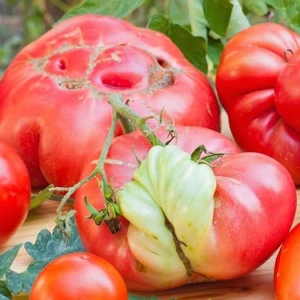The annual UN Environment Program Food Waste Index Report is out and the news is even worse than last year – when it was deemed an epidemic. The report claims that 17 percent of the food produced the world over is wasted, which totals more than 900 million metric tonnes, or 1 billion imperial tons…
 A significant amount of food waste takes place before any food
A significant amount of food waste takes place before any food
actually leaves the farm gate, as farmers toss food that don’t
meet wholesale and retail ‘standardization’ requirements.
If that sounds like a lot, it is – far more than previous estimates. On top of that, Canadians are deemed among the worst offenders, wasting 77 kg of food a year per person. That compares with 77 kg in the UK, and just 59 kg in the U.S.
How on earth do we manage to do that?
The way most other big wasters do. We’re among the most developed countries in the world and, as such, have advanced food inspection and food quality rules and regulations. This, in turn, results in more scrupulous food labelling regulations which routinely confuse many folks. Many Canadians, it seems, remain confused between labels that say ‘Best Before’, ‘Enjoy Before’ or something similar, and expiry dates. So, rather than risk making a mistake, we throw away perfectly good food ‘just to be sure’.
My late, great step-father, Graeme, epitomised that attitude. His mantra re.- tossing aged food was, “Why take chances?”
Well, I have news for you: saving and using foods after their ‘Best Before’ dates just means you may not be getting 100 percent of the nutritional value, flavour or appearance you’d get in the same produce right out of the field or store, not that it’s unhealthy or unwholesome in any way.
We also seem to have some over-cautious attitudes toward leftovers which result in us throwing them away ‘just to be sure’ rather than consuming them.
On the other side of the coin…
The report says Canadians and UK citizens eat a lot of takeout food compared to folks from other countries. A CBC story on the UN report playfully suggests, “Instead of finishing your leftovers, you let them go bad and buy takeout.” I strongly suggest, it’s not a laughing matter.
Though the UN report reveals that a shocking 611 percent of food wastage occurs in the home, the complete picture also shares out the blame for the world’s monumental food waste totals fairly with other sectors of the harvest-to-landfill cycle, claiming restaurants are responsible for 26 percent, and supermarkets (including the rest of the food chain) account for 13 percent. A significant percentage of wasted food never even makes it beyond the farm gate; it’s culled off by the farmers who say they ‘can’t sell it’ because it doesn’t meet the appearance standards or size constraints they place on produce items for the sake of ‘standardization’ (see photo, top of page).
Anyway…
As has been said in the past, in the recommendations attached to other food wastage reports, curbing food waste could go along way to helping feed the billions of folks (predominantly in the undeveloped world) who don’t get enough every day.
My take
If the foregoing is true (accurate), maybe we should concentrate more, as a society, on preventing food waste than we do on scientific pursuits aimed at increasing agriculture yields and other, related goals. Curbing waste could also buy us significant time in the race to prepare for the great food crunch which is now estimated to coming by 2040. Maybe we shouldn’t be focusing so much on convincing folks to eat more whole grains, tofu and other low-environmental-impact footprint foods and more on stemming food waste. But that gets the carbon footprint people into the conversation, which is well outside the scope of today’s discussion, not to mention that of the UN report…
~ Maggie J.

